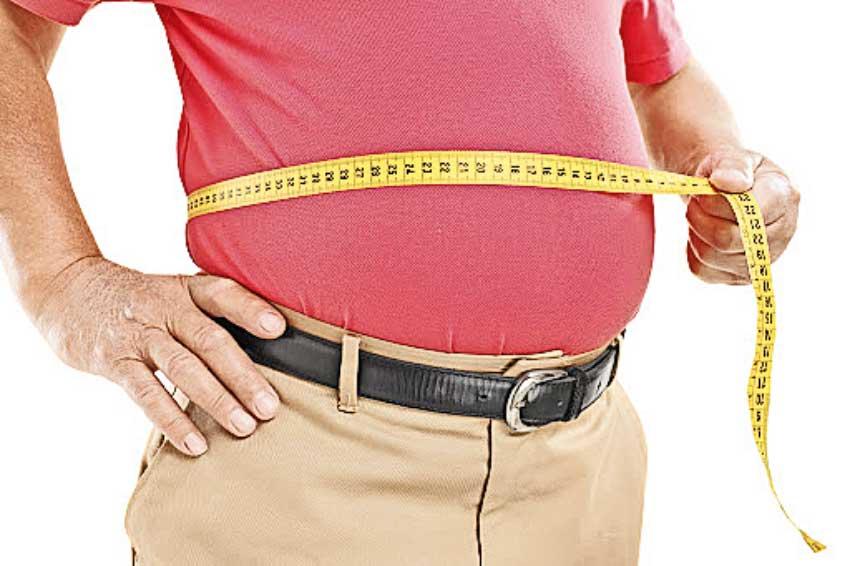19 Mar 2021 - {{hitsCtrl.values.hits}}

 Visceral fat is the fat deposited within the body and not visible in the exterior, mainly found around the abdomen and in other inner organs. In discussion with the Health Capsule, Consultant Surgeon attached to the Colombo South Teaching Hospital (Kalubowila) and Professor of Surgery at the University of Sri Jayawardenepura, Prof. Thejana Wijeratne explains on how to keep a tab on visceral fat. Visceral fat alone is not a disease or condition. However, excess visceral fat may manifest into other health conditions; mainly obesity. “Some fat may proportionally get deposited in the subcutaneous tissues as well” Prof. Wijeratne said.
Visceral fat is the fat deposited within the body and not visible in the exterior, mainly found around the abdomen and in other inner organs. In discussion with the Health Capsule, Consultant Surgeon attached to the Colombo South Teaching Hospital (Kalubowila) and Professor of Surgery at the University of Sri Jayawardenepura, Prof. Thejana Wijeratne explains on how to keep a tab on visceral fat. Visceral fat alone is not a disease or condition. However, excess visceral fat may manifest into other health conditions; mainly obesity. “Some fat may proportionally get deposited in the subcutaneous tissues as well” Prof. Wijeratne said.
Diagnosis
The first steps of diagnosis is to conduct basic investigations. Prof. Wijeratne said that the amount of fat deposited in the liver is a good indication of excess visceral fat. The liver fat content can be measured using various methods although the most basic is an ultra sound scan with ultrasound grading as fatty liver grade 1, 2 and 3. “If fatty liver grade 3 is ignored, it may lead into cirrhosis due to severe fatty liver disease. Also, there are fat impedance scans, which can detect the area affected by fat the most. An adult should be within the BMI range 19 - 25. Beyond this BMI range, you fall into the overweight category and may get listed under class 1, 2 or 3 obesity. It generally helps to give a rough idea regrading the excess fat a person may have” he added.
Complications
When visceral fat increases to a particular level, it becomes autonomous and starts acting on its own. This results in hormones being produced on its own, which could be very detrimental to the system. It will go on to increase the fat cell mass and the volume of the cells.
“That’s why when one crosses a particular BMI, one may continue to constantly gain weight regardless of the efforts done to counter the situation. Visceral fat can be associated with diseases as hypertension, diabetes, hypercholesterolemia, deposition of fat in blood vessels leading into ischemic heart disease and stroke.
“Most known cancers are linked to high visceral fat content. Hormonal anomalies such as menstruation fluctuations, sub fertility and risk of fat deposition in the chest cavity, breathing difficulties, obstructive sleep apnea, lack of mobility and uncontrolled weight gain are complications resulting from excess visceral fat - hence, may result in falling sick and dying very early” Prof. Wijeratne said
Management
. The main method of management is to to prevent the deposition of fat. Unless it is due to few rare endocrine causes, which is less than 10%, almost 90% of the people suffering with high visceral fat is due to excess calorie intake. It is important to reduce the calorie intake, in order to keep the energy intake and expenditure balanced. Stating that certain drugs may have to be administered in the hope of curtailing the absorption of fat and fat metabolism, Prof. Wijeratne explained that these drugs however play a very limited role. “In case an individual is class 3 obese and contain a huge excess of visceral fat, one can proceed with metabolic surgery or surgical procedure done in the viscera or the gastrointestinal track to reverse the deposition of fat” he added.
Adding that exercises alone cannot burn enough calories, he stressed that “working out and thereby losing weight is a huge myth”. However, regular exercise technically helps in maintaining weight and cardiovascular health. Only marathon runners and the like who engage in extreme workout can burn more calories and lose weight compared to the average person. “In an average healthy individual, you can only maintain a healthy weight and balance the visceral fat by keeping a tab on visceral fat accumulation” Prof. Wijeratne concluded.
21 Dec 2024 58 minute ago
21 Dec 2024 2 hours ago
21 Dec 2024 5 hours ago
21 Dec 2024 5 hours ago
21 Dec 2024 6 hours ago